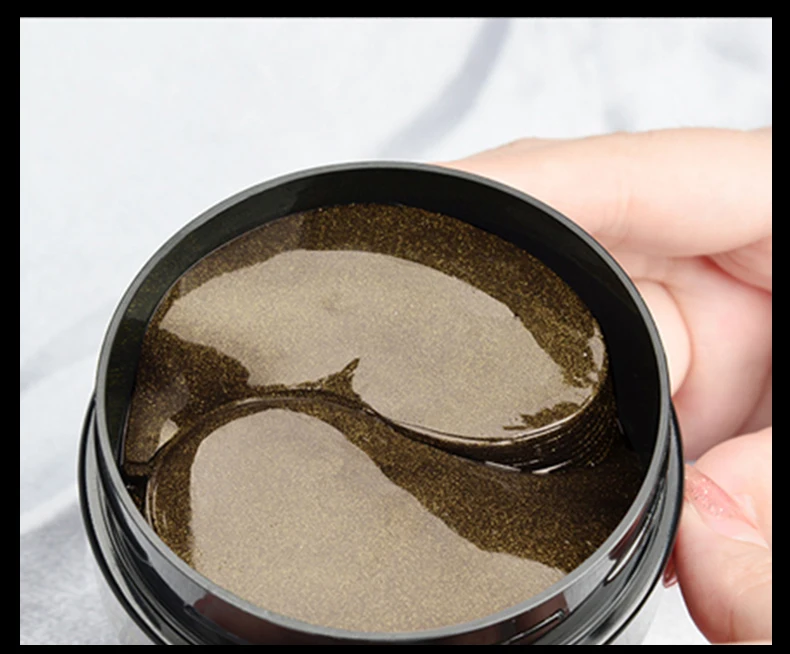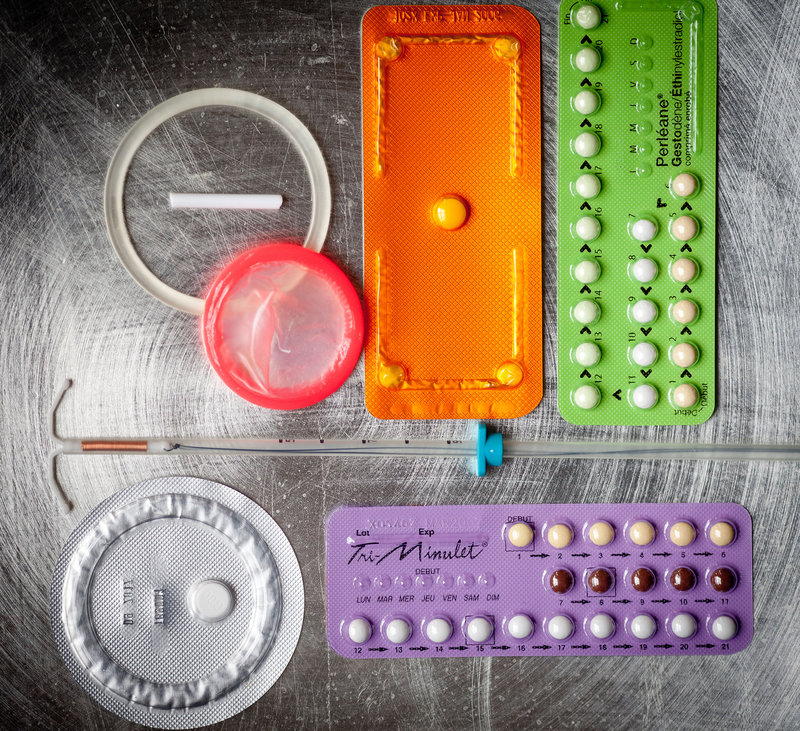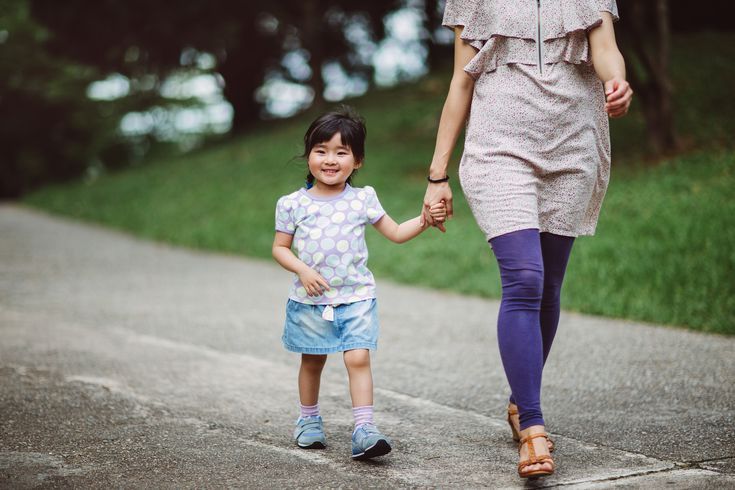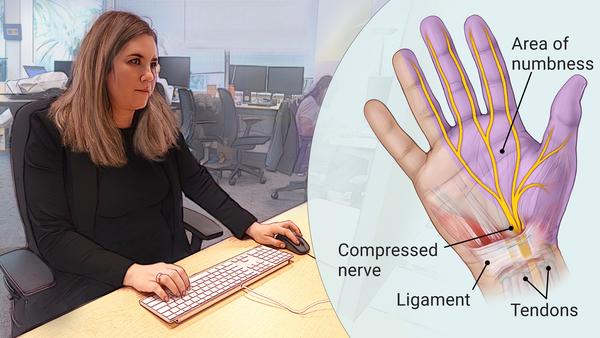6Months old baby
Your baby's developmental milestones at 6 months
Explainer
Everything you need to know about your growing 6-month-old.
UNICEF
At 6 months, your baby will start using sounds to express emotion. She/he may mimic sounds she/he hears, like "ma,” “da,” “ah,” “oh" and even "no!" Your little one will begin to recognize familiar faces, reach and grasp for toys and will soon be crawling — start preparing your home (and yourself) for a mobile child!
Get ready by removing any sharp, breakable or electric objects from the child’s reach, locking closets with dangerous liquids or supplies (or putting them in a safe place far out of your child’s reach), and closing windows to ensure your child’s safety.
| Social and emotional |
| Language and communication |
| Brain development |
| Movement and physical development |
| Food and nutrition |
| Things to look out for |
| Tips and resources |
| < Back to Parenting Milestones |
Social and emotional milestones at 6 months
Some of the ways you’ll see your little one learning to connect with the people around him at 6 months.
- Is usually happy and responds to the emotions of others.
- Starting to differentiate between familiar faces and strangers.
- Enjoys playing with you and others.
- Has fun looking at himself in a mirror.
Tips for parents
- Talk to your baby about what is going on around him in a sweet tone.
- Include a child-friendly or plastic mirror with his toys so he can watch his movements.
- Start playing more body games like peek-a-boo.
Language and communication milestones at 6 months
How your baby is expressing her needs.
- Will recognize and respond to her name.
- Puts vowel sounds together and likes taking turns saying them with you. She is starting to make some consonant sounds, too.
- Will respond to noises by making sounds.
- Is making sounds to show positive and negative emotions.
Tips for parents
- Engage in playful conversations with your baby: Create a serve-and-return interaction by repeating back to her the sounds she makes.
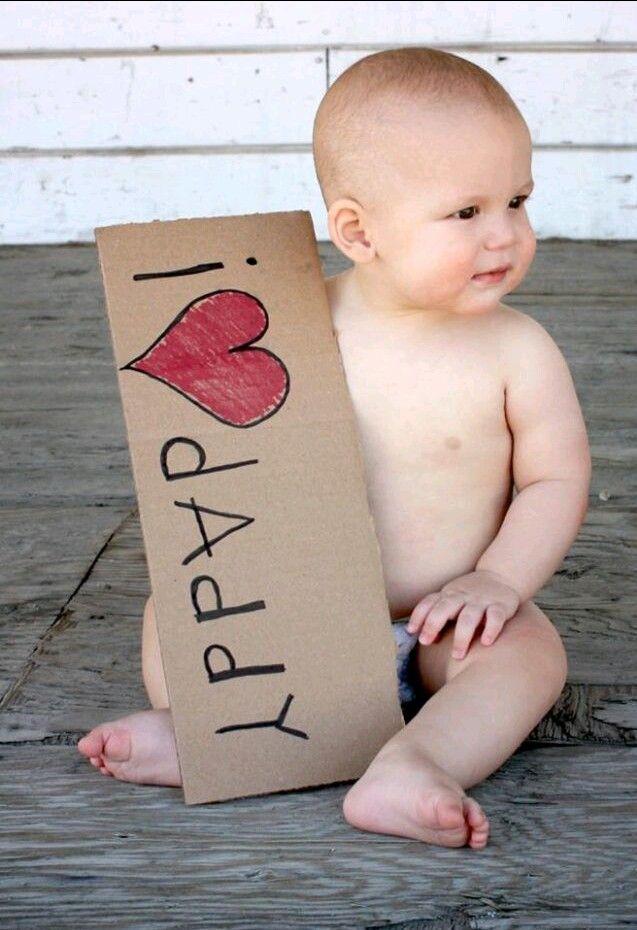
- Familiarize your baby with her name by using it frequently.
Brain development milestones at 6 months
Your child’s brain is growing!
- He is curious: He looks at objects nearby and tries to grab ones that are out of reach.
- He passes things from one hand to the other and brings his hands to his mouth.
Tips for parents
- Provide your baby with toys that are easy to pick up with one hand.
- Have conversations with your baby about different objects he is putting into his mouth.
Movement and physical development milestones at 6 months
How she’ll move through her environment.
- Is starting to be able to sit without a support.
- Is rolling over in both directions.
- Will push down on her legs when her feet are on a hard surface.
- Rocks back and forth.
Tips for parents
- Leave her favourite toys nearby so she can reach them by rolling over.

Food and nutrition milestones at 6 months
What mealtimes look like at 6 months.
- Is showing an interest in food and opens his mouth when spoon fed.
- Is moving food from the front to the back of his mouth when he chews.
- Is starting to eat cereals and single-ingredient pureed foods like carrots, sweet potato and pears.
Tips for parents
- At 6 months, your baby needs more than breastmilk alone. Start giving him just 2 or 3 spoonfuls of soft food four times a day.
Things to look out for
While all babies develop differently, you should speak to your paediatrician immediately if your 6-month-old:
- Doesn’t show affection to parents or caregivers.
- Won’t respond to nearby sounds.
- Doesn’t laugh.
- Has a hard time getting things into her mouth.
- Doesn’t make vowel sounds.
- Seems too floppy or too stiff.
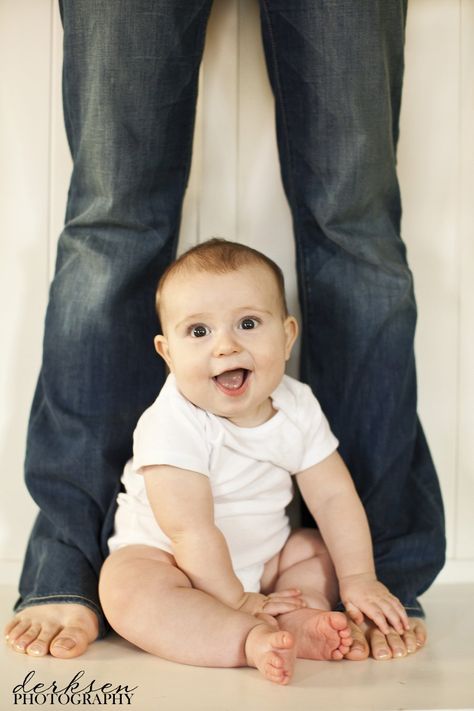
- Can’t roll over in either direction.
- Doesn’t attempt to grab objects nearby.
True or False?
Loading...
Explore age groups
2 Months | 4 Months | 6 Months | 9 Months | 1 Year | 18 Months | 2 Years
< Back to Parenting Milestones
Baby Development: Your 6-Month-Old
Written by WebMD Editorial Contributors
Reviewed by Dan Brennan, MD on January 15, 2022
You may find it hard to believe, but you’ve made it halfway through your infant’s first year! In just six short months, your baby has started to learn how to communicate and to eat solid foods.
This portion of WebMD’s month-by-month guide provides a few of the baby milestones you can expect your child to achieve in the sixth month.
Sixth Month Baby Milestones: Growth
During the first few months of life, your baby was growing at a rate of about 1 ½ to 2 pounds a month. By now, they should have at least doubled their birth weight. At six months, baby’s growth will slow to about 1 pound a month. Height gain will also slow, to about a half-inch each month.
By now, they should have at least doubled their birth weight. At six months, baby’s growth will slow to about 1 pound a month. Height gain will also slow, to about a half-inch each month.
Sixth Month Baby Milestones: Motor Skills
Your baby may be starting to sit up alone by six months. To get ready, babies first prop themselves up with their hands, but over time they can start to let go and sit unsupported.
Your 6-month-old can probably roll from their back to their stomach and vice versa. Some babies can propel themselves around the floor using this rolling method. Or, they may creep forward or backward -- sliding around on their tummies while pushing against the floor. You may notice your baby rise up on hands and knees and rock back and forth.
Sixth Month Baby Milestones: Sleep
Most babies are sleeping six to eight hours at a stretch by six months. When babies at this age have trouble falling or staying asleep, some parents turn to a method developed by pediatrician Richard Ferber.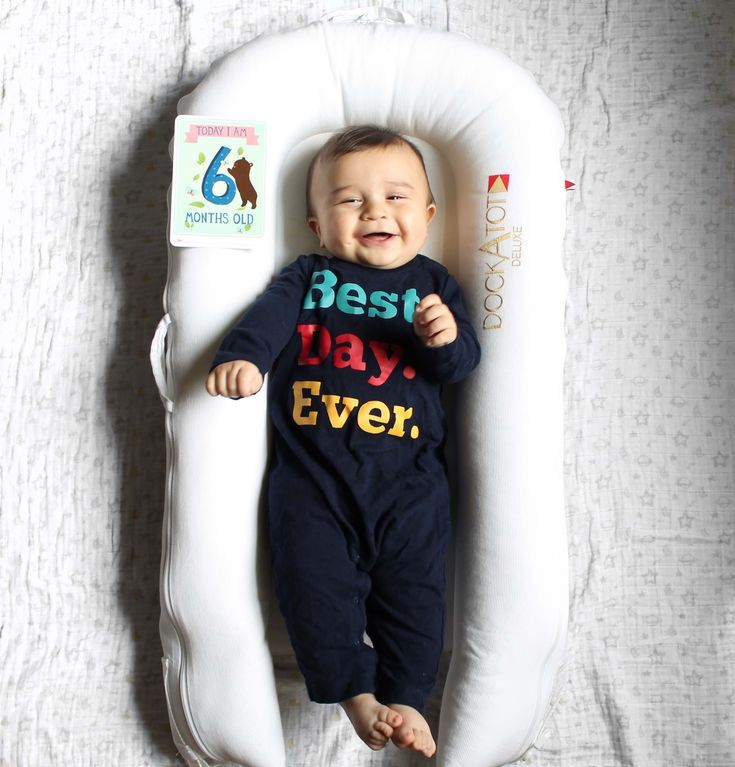 The Ferber Method, as it is known, involves putting your baby into the crib while they are still awake. If your baby cries, wait for a progressively longer period of time each night before going in to provide comfort. This method works well for some families, but you may need to experiment with several different sleep methods before you find the one that works best for you.
The Ferber Method, as it is known, involves putting your baby into the crib while they are still awake. If your baby cries, wait for a progressively longer period of time each night before going in to provide comfort. This method works well for some families, but you may need to experiment with several different sleep methods before you find the one that works best for you.
Now that your baby can roll over independently, don’t be alarmed if you put them to sleep on their back and they wake up on their tummy. The risk of SIDS is much lower at six months than it was in the first few months of life. Still, it’s a good idea to keep stuffed animals, pillows, crib bumpers, and other soft items out of the crib for now.
Sixth Month Baby Milestones: The Senses
You may notice that your baby’s eyes have changed from their birth color. Lighter-colored eyes may go through several shifts before settling on their final shade at about six months. If your baby still has blue eyes now, chances are they’ll stay that way permanently.
The nerves in babies' mouths are much better developed than their fingertips, so placing anything -- and everything -- into the mouth can provide babies with more information than holding something. Babies may suck on their thumbs, fingers, and even their toes to soothe themselves, especially when they're hungry or tired.
Sixth Month Baby Milestones: Eating
If you haven’t started your baby on solid foods already, your pediatrician will likely recommend that you do so at six months. Begin with an iron-fortified cereal mixed with breast milk or formula. As your baby adjusts to solids, introduce pureed fruits and vegetables one at a time. Wait a few days each time you try something new to make sure they aren’t allergic to it.
If your baby doesn’t seem to like a new food, wait a few days and then try it again. Babies are fickle creatures and their tastes can change from one day to the next.
Introduce foods one at a time to be able to monitor for any reactions such as rash, diarrhea, or vomiting. According to the American Academy of Pediatrics, there is no evidence that introducing foods such as eggs and fish after 4-6 months of age increases the risk of food allergies; the AAP recommends introducing allergenic foods early in most cases. However, wait to give your baby honey until at least age 1, because it can carry the bacteria that cause botulism. Cow’s milk should also not be given until your baby is at least 1 year old, although products made with cow’s milk, such as yogurt or soft cheese, are fine.
According to the American Academy of Pediatrics, there is no evidence that introducing foods such as eggs and fish after 4-6 months of age increases the risk of food allergies; the AAP recommends introducing allergenic foods early in most cases. However, wait to give your baby honey until at least age 1, because it can carry the bacteria that cause botulism. Cow’s milk should also not be given until your baby is at least 1 year old, although products made with cow’s milk, such as yogurt or soft cheese, are fine.
Sixth Month Baby Milestones: Communication
Your 6-month-old baby should be smiling, laughing, and babbling away (“ma-ma,” “ba-ba”). To help them learn the language, read stories together every night.
Babies at this age are starting to recognize the people and things around them. Your baby will start to feel comfortable with the familiar -- mommy, daddy, grandma, and grandpa, as well as a few of their favorite toys. You might see the first signs of fear when they are with strange people or in new situations.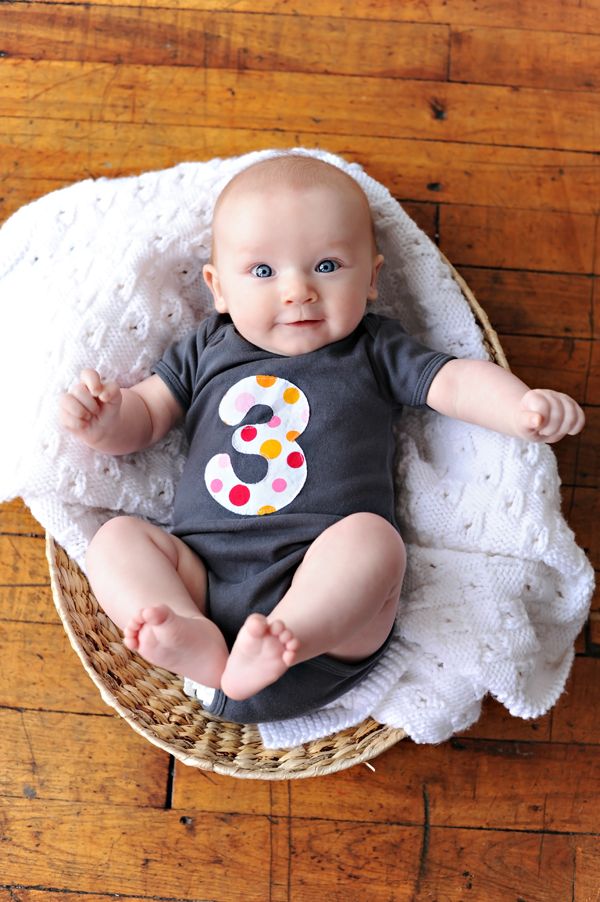
Going Back to Work
You may be lucky enough to have a friend or relative nearby to babysit. If not, here are a few tips for choosing a safe and trustworthy childcare provider:
- Visit several childcare centers. Spend as much time as possible at each one to get a feel for what your baby might experience there. If you’re able, drop in unannounced so you can see how the center runs when they’re not prepared for a visit.
- Check to make sure that the facility provides a clean, safe environment. There should be no obvious safety hazards -- such as dangling cords, open outlets, or small toys -- and emergency procedures should be clearly posted.
- Ask about the ratio of staff members to children. The fewer children per staff member, the better. Each state’s requirement for licensed childcare centers varies, but most stipulate no more than three to six babies for every one childcare worker.
- Find out about the background of every person who will be watching your child.
 Make sure the facility conducts careful background checks of all their employees, from the childcare workers to the maintenance people.
Make sure the facility conducts careful background checks of all their employees, from the childcare workers to the maintenance people. - Ask to look at the written policies that explain when a child may or may not attend day care because of being sick, including rashes, a fever or diarrhea.
- Find out what the requirements are for vaccinations.
- Ask what foods you should provide for your baby and what foods might be supplied by the day care. If you want to supply all of your baby's food, ask if that is acceptable and what you need to provide.
Tips for Baby’s Sixth Month
- Be on the lookout for signs that your baby is not hitting important milestones, like babbling, sitting unassisted, smiling, making eye contact, or responding to sounds. If you’re concerned they have missed any milestone, call your pediatrician.
- Some babies bang their heads or rock their bodies. It's normal, provided they aren't hurting themselves or doing it for hours at a time.

- Play peek-a-boo and similar games with your baby. It will help teach the idea of object permanence -- that objects still exist, even when they’re out of sight.
- Place toys just out of reach on the floor to encourage your baby to start crawling.
- If you have older children, make sure to put away toys with tiny pieces to prevent your baby from choking.
Child development at 6 (sixth) months of life: what a child should be able to do
The first weaning is another important event at six months. The baby first tries something other than milk or an adapted formula.
What a baby should be able to do at 6 months
At this age, the infant's visual system is actively developing, he focuses his eyes on the toy for a long time, and can follow its movement. Actively studies objects around him, shifts toys, looks at them, listens to the sound.
A baby at 6 months holds objects well in his hand, while he can roll over on his side, on his stomach with them. The child uses all of his "sense organs" to explore the world around him. Always surround him with lots of interesting things to touch, put in his mouth and play with.
The child uses all of his "sense organs" to explore the world around him. Always surround him with lots of interesting things to touch, put in his mouth and play with.
What a baby can do at 6 months:
- Baby rolls from back to stomach and back without help. The muscular system is strengthened, the baby is becoming more mobile. Strong muscles in the neck, arms and back allow for effortless turning.
- The hypertonicity in the legs and arms completely disappears, the ability to control one's limbs appears.
- Many babies begin to sit up on their own during this period, or at least try to do so.
- If the child is held under the arms, he confidently pushes off with his legs from a hard surface.
- Eye-hand coordination is so developed that the child consciously and purposefully reaches for objects with both hands, can pass them from hand to hand.
- The sucking reflex practically disappears and the baby can be fed with a spoon.
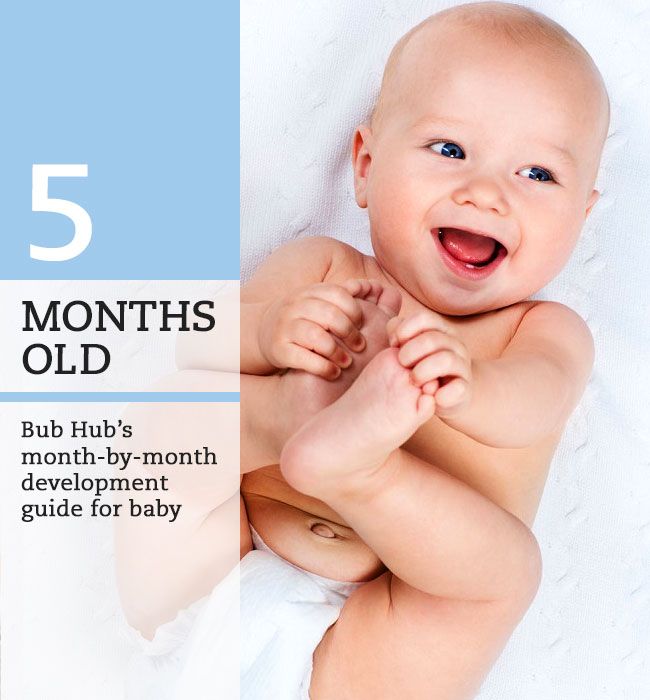
- The sixth month is characterized by a growth spurt, the child begins to show more emotions. First of all, it is joy and anger, which can be expressed through gestures, facial expressions or various sounds
- A six-month-old baby can play with one toy for a long time and not be distracted for 15-20 minutes. Therefore, it is recommended to actively develop fine motor skills with the help of developing rings and pyramids.
At the age of six months, the process of teething begins, swelling of the gums and increased salivation can be observed. It is important to visit a pediatric dentist to determine the condition of the frenulum and jaw structure.
At 6 months, night sleep lengthens, the child can continuously sleep for 6-7 hours. The amount of daytime sleep decreases - 2-3 times for 30-40 minutes.
Baby skills at 6 months
So, the baby has reached the age of six months, as he looks: lying on his stomach, leans on the pelvis and arms, while his palms are fully open, he knows how to lift his chest from the surface well, and can bend a little in the back.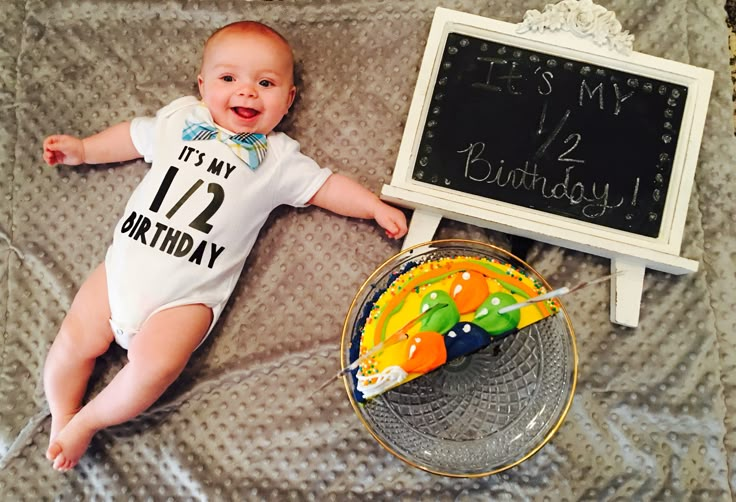
At 6 months, the child's skills develop, the following changes are observed:
- The kid is active, independent, becomes extremely inquisitive. There are skills of finding the object that he is told about, he will easily point to his favorite toy.
- The cognitive function of the brain continues to develop: at 6 months, the baby begins to understand the relationship of cause and effect (if you push the toy, it will fall).
- The baby can play enthusiastically for some time without requiring attention from the mother.
- He can crawl like a plastuna, although he sways from side to side.
- Can drink from a mug by itself if held.
- At this age, as a rule, the first tooth appears - usually in the lower jaw.
Child's height at 6 months
Child's height at 6 months according to the average data of pediatricians:
- The lower limit of normal in boys ranges from 63.
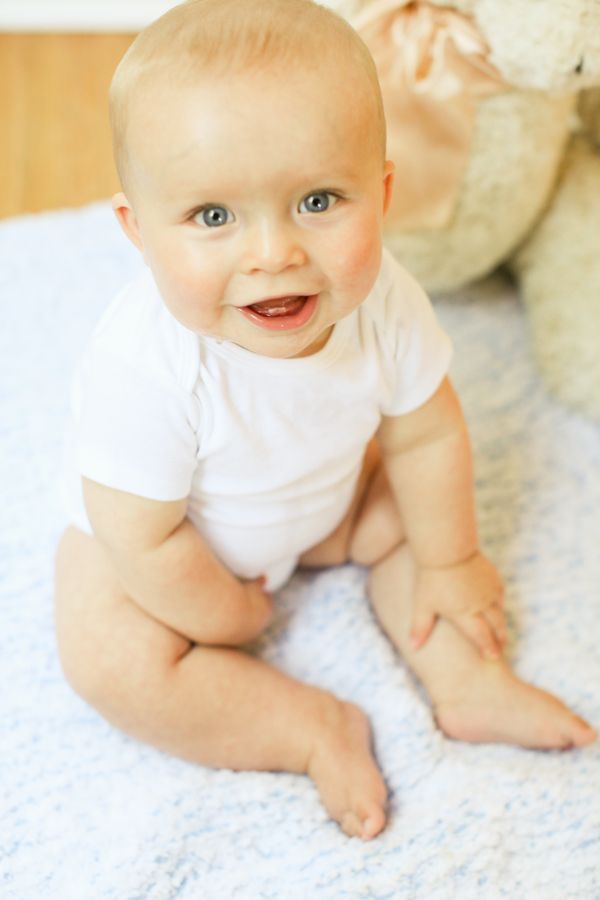 3 cm to 63.5 cm, the upper limit is from 69.8 cm to 71.9 cm
3 cm to 63.5 cm, the upper limit is from 69.8 cm to 71.9 cm - Girls can be 61.2 cm to 63.5 cm tall at the bottom and 68.0 cm to 70.3 cm at the top
Height of a six-month-old baby according to WHO:
- The lower limit for boys ranges from 63.2 cm to 65.5 cm, the upper limit from 71.7 cm to 71.9 cm
- Girls can be between 61.4 cm and 69.9 cm
How much should a baby weigh at 6 months
According to the statistics of domestic pediatrics, the weight of a child at 6 months should approach the following standards:
- Boys: 6.5 kg to 9.1 kg
- Girls: 6.2 kg to 8.4 kg
The World Health Organization suggests the following standards:
- Boys: 7.1 kg to 8.9 kg
- Girls: 6.5 kg to 8.3 kg
Mental development of a child at 6 months
At six months, parents notice a change in the psycho-emotional background of the child. If earlier crying was the main tool of communication, now it is mainly negative emotions expressed in this way - pain or discomfort. The "vocabulary" of the baby is increasing, in his arsenal there are already about 40 sounds.
The "vocabulary" of the baby is increasing, in his arsenal there are already about 40 sounds.
The mental development of a child of six months of life is progressing, now a completely conscious conversation takes place between an adult and a baby. He can show or find the subject in question.
The kid recognizes the voices of his parents at a distance, reacts with a joyful squeal or peculiar exclamations, showing the need for attention. At the age of six months, children show tenderness to their parents as much as possible, tend to snuggle and hug.
There is an awareness of causal relationships. The baby begins to understand that the mother will come to the cry, and if a bottle or plate appears in the field of view, it is lunch time.
The child has an innate instinct for self-preservation, but due to the lack of proper experience, it is not well developed. And given the fact that the baby’s mobility is increasing, you should carefully monitor his movements and secure the space around the child as much as possible so that he has more opportunities to explore the “world”.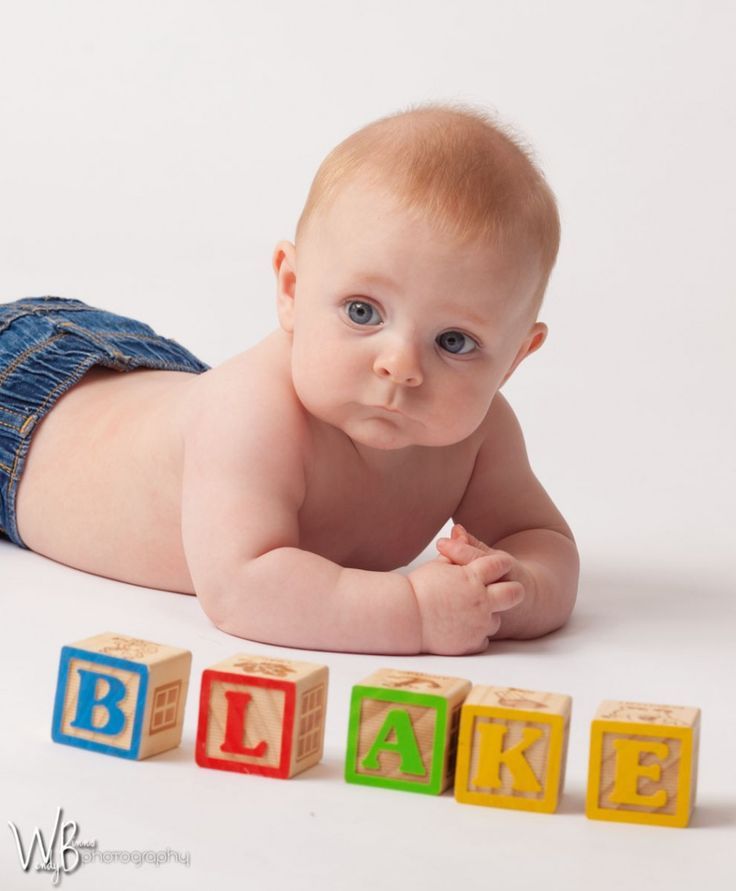
[1] The first weaning is an important event
At six months, they begin to introduce complementary foods, which allows you to diversify the diet of the child. You should start with soft foods, choosing vegetable purees or cereals, maintaining interest in new foods, and also giving a little taste of what mom or dad eats. Learn more about first feeding.
Six-month-olds develop an understanding of "object permanence": they will look for an object that has been dropped or that has disappeared from view.
At 6 months, the child's coordination improves, movements become purposeful. Now the state of the baby is easy to determine by his emotions, he openly expresses joy and discontent. At this stage of development, the child checks what materials the toys are made of and what sounds they make. He feels them, shakes them, and even tastes them.
Child care at 6 months
For the most part, parents already know how to care for an infant.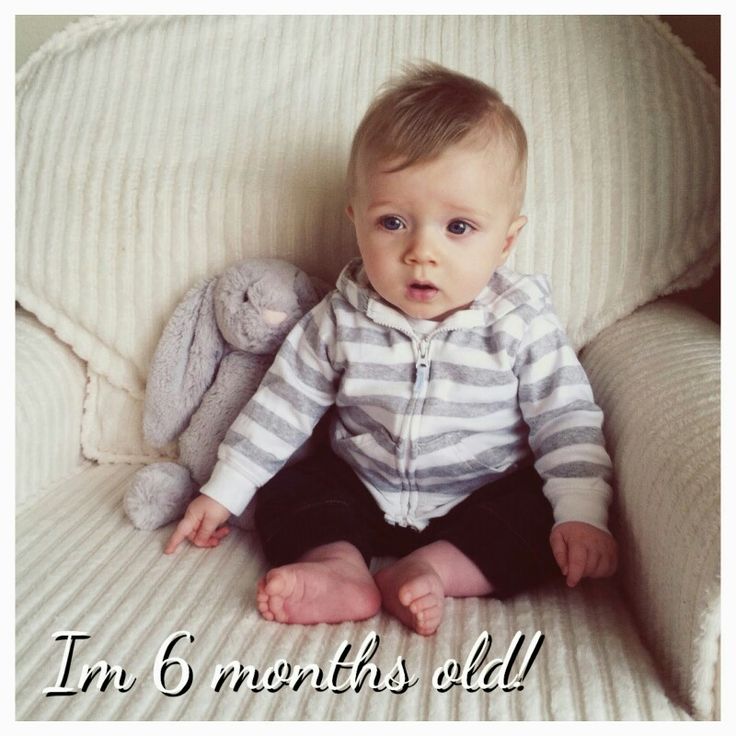 The rules of care remain unchanged - daily washing, timely change of diapers, full bathing twice a week.
The rules of care remain unchanged - daily washing, timely change of diapers, full bathing twice a week.
Since the child is intensively learning to crawl, it is necessary to monitor the cleanliness of the house and the baby's hands. At six months, the process of eruption of the first teeth begins, a decrease in local immunity of the oral cavity is possible. Parents should make sure that all toys that a child puts in their mouth are as clean as possible. Such precautions will help to avoid the development of infectious processes.
The sixth month is great for weaning from the pacifier and bottle, the baby should be given to drink from a cup or spoon as often as possible. If the baby stubbornly refuses to give up the pacifier, pediatricians recommend replacing it with a special orthodontic nipple.
An important step in the care is daily massage and gymnastics, swimming in a special pool. Gymnastic exercises are aimed at stabilizing the child in space. Be sure to check with your pediatrician before doing any exercise.
Be sure to check with your pediatrician before doing any exercise.
[2] Six months is the right age to assess your baby's development. In this period, the child achieves a very important skill - he masters the skills of turning from back to stomach, and does it equally deftly, both to the left and to the right. In addition, the child continues to stubbornly try to sit up. Six months is exactly the time by which the child should learn to perform such actions. However, it is necessary to take into account the individual characteristics of each child and not rush things.
You might be interested in reading an article on baby development at 7 months.[1] - https://www.who.int/childgrowth/standards/ru/
[2] - Edited by S. Sapozhnikova: Development of a child's personality from birth to a year
L. Anikeeva: Pediatrics. Complete guide for parents
Baby development at 6 months: physical, physiological development
The sixth month is full of new discoveries, new achievements. The child actively explores the world around him, objects, learns to express emotions. The development of a child in six months changes a lot. The baby begins to try new foods that are offered to him as complementary foods.
The child actively explores the world around him, objects, learns to express emotions. The development of a child in six months changes a lot. The baby begins to try new foods that are offered to him as complementary foods.
How the child changes physiologically
During this period, the growth of the baby increases by 2 centimeters. And the weight gain is up to 750 grams. In some children, the first teeth are already erupting by this age. Which leads to whims, mood swings, irritability. The kid is trying to “try on the tooth” everything.
Physical development
Each child is individual. A baby's skills at 6 months may differ between boys and girls.
Auditory perception
At six months, the baby reacts to sounds. He likes to listen to melodic music, he is interested in musical toys. Sometimes babies “sing along” when they hear a melody. The child understands when he is addressed, reacts to this with a smile.
Visual perception
Vision is normally well developed. The kid distinguishes objects, colors. Vision becomes sharp. During this period, the baby begins to be interested and study small objects, details.
The kid distinguishes objects, colors. Vision becomes sharp. During this period, the baby begins to be interested and study small objects, details.
The doctor evaluates the physical development of the baby using the centile method. He compares the height and weight of the baby according to the tables, determines the corridor in which the child is located. If there are deviations from the norm in two or more corridors - a reason to contact our doctors. At a remote consultation, they will explain the developmental norms of the baby, adjust the child’s nutritional norms, and advise on physical exercises for development.
What can a baby do at 6 months
The child distinguishes parents by voice, even if they are out of sight. At this age, the baby is able to follow objects, the movements of people. A 6 month old baby can:
- search and find objects that were hidden in front of him;
- creeps;
- manages well with two hands at once - holds objects, shifts them from hand to hand;
- the syllables and sounds pronounced by the child increase;
- sits down without assistance;
- can occupy himself for 15 minutes;
- She tries to eat on her own using a spoon.
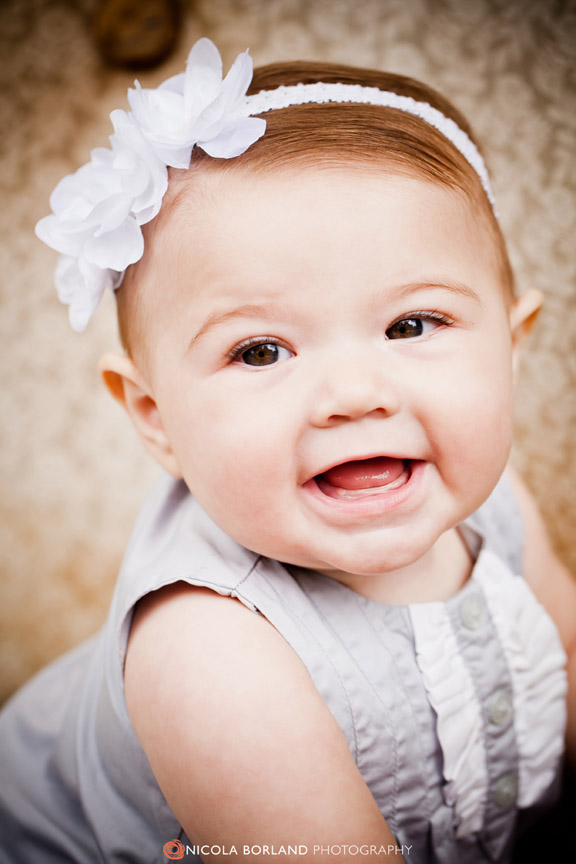
Reflexes and motor skills
Psychomotor development is assessed by whether the child is able to roll over from his stomach to his back and vice versa, to keep himself on outstretched arms. Doctors evaluate the baby's ability to make a palm grip. If we talk about the fact that girls develop faster than boys, then this trend is not always visible. Boys at 6 months, with pronounced mobility and low weight, can develop motor faster than their peers, who have a lot of weight.
Psycho-emotional sphere
The psychoemotional development of a child in six months includes:
- crying, which he uses only in cases of discomfort;
- the child tries to repeat the sounds he hears, sometimes imitating intonation;
- begins to respond with a voice to the speech of the mother;
- children in six months are ways to show feelings of affection, cuddle, kiss their parents;
- they are wary of strangers, keep their distance, fear of strangers disappears;
- primitive causal relationships are formed;
- interested in studying the features of objects.
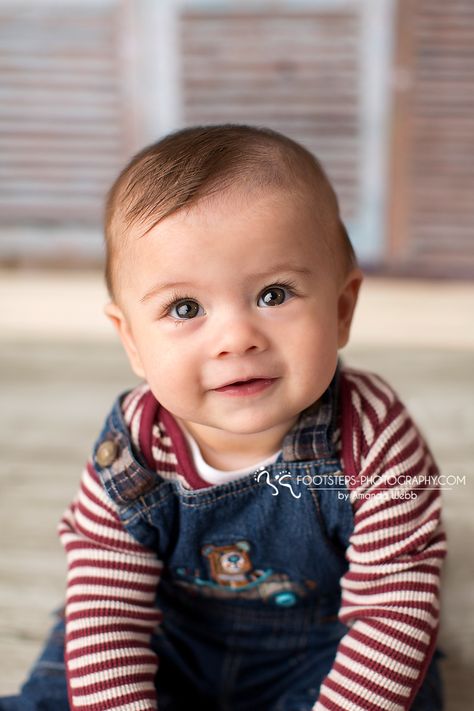
It is possible to draw conclusions about the formed changes in the intellectual plan of the child when fears appear. This indicates an understanding of the connection of the phenomenon, their foresight.
Lure
At six months, parents begin to introduce the child to products that are allowed at this age. It is much easier for kids on guards to get to know them than a child on willows. This is because breastfed babies are introduced to the taste of many foods through their mother's breast milk.
During the introduction of products, you must follow the rules:
- start complementary foods with hypoallergenic foods. The second is not administered until the baby's body is used to the first;
- fed until breastfeeding or before giving formula;
- if adverse reactions to the product appear, it is immediately canceled.
Complementary foods start with one teaspoon of the new product. In the absence of complications, you can increase gradually, bringing up to 30 grams per day.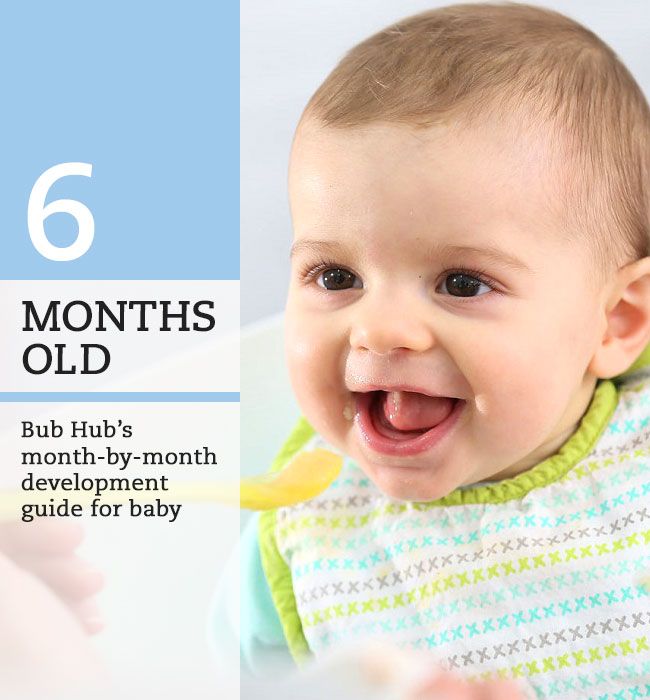 In this case, the child should eat a new product well. It is not worth forcing to eat, it is important to offer.
In this case, the child should eat a new product well. It is not worth forcing to eat, it is important to offer.
Important! Allowed complementary foods are introduced into the baby's diet after consultation with doctors. This is especially important for formula-fed babies.
First teeth
By six months, babies begin to erupt teeth. Normally, the lower incisors appear first. In this case, the child experiences discomfort: the gums swell, hurt. Sleep is disturbed, the baby becomes irritable, capricious, whiny. The child needs more attention, refuses to eat. To reduce discomfort from this process, special gels and teethers are used. Some parents offer cold fruits to their children. In this case, the cold will work as an anesthetic, but not for a long time.
How to wash children at this age
The daily procedure includes washing in the morning, washing, hair care, hand hygiene.
| boys | Girls |
| Clean, warm running water is used for washing. | Girls should be washed after each bowel movement. There is no need to bathe every time you change a diaper. For intimate hygiene, special care products are selected. |
Hair with shampoo should not be washed every day. Once every few days is enough.
FAQ
How to properly develop a six-month-old baby?
+
For these purposes, it is necessary to talk with the baby as often as possible, sing songs, recite poems. Give as many objects of different shapes as possible, pronouncing the names, introduce the surrounding objects on the street. Do not forget about the gymnastics necessary for the harmonious development of the child.
What are the weight and height indicators for a six-month-old baby?
+
The average weight of a baby in six months is 7300-7900 grams, height - 65. 7-67.6 centimeters. These values are averages. Since girls can reach a height of 70 centimeters and weigh 9300 grams, and boys - 71.9 centimeters and 9800 grams.
7-67.6 centimeters. These values are averages. Since girls can reach a height of 70 centimeters and weigh 9300 grams, and boys - 71.9 centimeters and 9800 grams.
What daily routine should a baby have at 6 months?
+
A six-month-old baby at this age sleeps up to 13 hours a day. At the same time, two daytime sleeps are still saved. The daily routine of each child is individual and depends on the needs of the baby, his well-being.
What is the norm in feeding in infants at six months?
+
Normally, a baby eats up to 600 milliliters of breast milk, formula and 200-300 grams of complementary foods, which are divided into six doses.
Expert opinion
6 month old baby becomes very active, mobile. His musculature was strong enough that he tried to sit up on his own. Vision, hearing are fully developed and function as in adults. The baby already knows how to freely roll from back to stomach and vice versa, lie on its side.
 Wet wipes can be used throughout the day. In the process of bathing, the genitals are washed using detergents for children's intimate hygiene.
Wet wipes can be used throughout the day. In the process of bathing, the genitals are washed using detergents for children's intimate hygiene. 

